REVIEWED P2 OPTIONS
| ||
Reviewed Rubber and Plastics OptionsFollowing are a list of options that have been reviewed by pollution prevention specialists. These options have worked at other facilities and may work at yours. |
||
Covering Chemical Containers | ||
| Prevent chemical additive leaks and spills during compounding or finishing operations by habitually covering chemical containers. | ||
Good Housekeeping Practices | ||
| Segregate raw materials and lubricating oils from cooling and heating water, so that pollutants not produced during the plastic molding and forming operation will not enter the cooling and heating water. | ||
Reuse and Recycle Process Water | ||
| Reuse and recycle process water through a sedimentation tank intended to eliminate the suspended solids in order for process water to be reused | ||
Reuse and Recycle Process Water | ||
| Reuse and recycle process water through a sedimentation tank intended to eliminate the suspended solids in order for process water to be reused | ||
Treatment of Recycling Unit Discharge | ||
| Implement end of pipe treatment of the recycling unit discharge. | ||
Remove TSS and Phthalates from Finishing Water | ||
| Remove TSS in a settling unit and remove phthalates through an activated carbon process. | ||
Participation in Operation Clean Sweep (OCS) | ||
| A joint effort of SPI and American Plastics Council, a program that includes implementing the following measures: minimizing spills, quickly and systematically cleaning up spills, and appropriately disposing pellets by implementing employee education, through sweeping efforts, improved pellet capture methods, and disposal safety measures. | ||
Recycling plastic waste | ||
| Recycle single plastic resins and mixtures of plastic resins. Recycling mixtures of plastic resins will result in a lower quality as opposed to recycling single plastic resins. | ||
Careful Chemical Transportation Mechanisms | ||
| Receive chemicals in closed docks in sealed containers or in bulk rail or truck shipments with minimal spills. Store chemical piles inside the facility to guarantee fugitive emissions are contained within the facility | ||
Seal Containers for All Open Materials | ||
| Seal open containers to minimize puffing losses when containers are opened. The sealed containers should have air space between the chemical and the container cover. | ||
Secondary Containment Mechanisms | ||
| Use for all storage containers to protect against leaks and spills. | ||
Automatic Dispensing and Weighing Equipment | ||
| Use whenever possible for quality control and to minimize waste from spills due to manual dispensing | ||
Reduce Toxic Chemical Usage | ||
| Reduce the use of toxic chemicals through reformulation. | ||
Computer Inventories | ||
| Use a computer inventory system in order to reduce the amount of purchased stock | ||
Spills and Sweeping Protocols | ||
| Ensure the proper segregation of waste by implementing appropriate protocol for cleaning up spills and sweeping. | ||
Water Reuse and Recycling | ||
| Install a closed loop water heating or cooling system. | ||
Substitute lubricating grease for oil | ||
| Substitute lubricating grease for oil (especially appropriate for milling equipment) to prevent the contamination of wastewater. Grease has been shown to considerably diminish the amount of manifested waste. | ||
Preventative Maintenance on Process, Molding, and | ||
| Preventative maintenance can reduce manifested oil and grease waste through waste reduction generated by worn seals and gaskets. | ||
Removal of oil from oily wastewaters | ||
| Remove oil from oily wastewaters prior to disposal to decrease the amount of wastewater disposed. For example, oily wastewaters can be collected from equipment engine pits and directed through a central oil/water separator before discharge. | ||
Segregation and Recycling of Waste Rubber | ||
| In some cases, simplifying the segregation of waste streams is as easy as positioning a screen over a portion of the molding equipment so that the waste rubber stock produced during performing operations can easily be separated from oily wastewaters. The waste rubber stock can then be fed back into the process for recycling. In addition, the segregation of cured and uncured rubber can make recycling of the uncured rubber easier. | ||
Reclaim and Recycle Off-specification Rubber | ||
| Reprocess used rubber products that can be integrated into virgin rubber compounds. Add scrap rubber to coal and wood waste fuels for firing process boilers. Process used rubber products into sheets and various shapes to utilize as athletic area surfaces and other floor covering services. Make it into sheet gasket material or loading dock bumpers. | ||
Tracking of Waste Indices | ||
| Monitor and track the total pounds of non-recyclable waste shipped offsite per 100 lbs of product and also the total pounds of hazardous water generated per hundred pounds of product in order, and aim for reducing these indices. | ||
Substitute or Eliminate (Hazardous Air Pollutants) | ||
| Tire cementing and spraying operations and retread and recapping industries can substitute or eliminate HAPs typically used in solvents and cements, because rubber compound components can typically adhere without cement and solvent aides | ||
Reuse and Recycle Scrap Tires (those incapable of | ||
| Use scrap tires as a fuel or fuel supplement in an array of utility and industrial applications. Grind to use as an additive to asphalt paving materials. Use whole and processed tires in civil engineering. Use cut, split, and ground tires in new products | ||
 Find Options for other processes
Find Options for other processes





